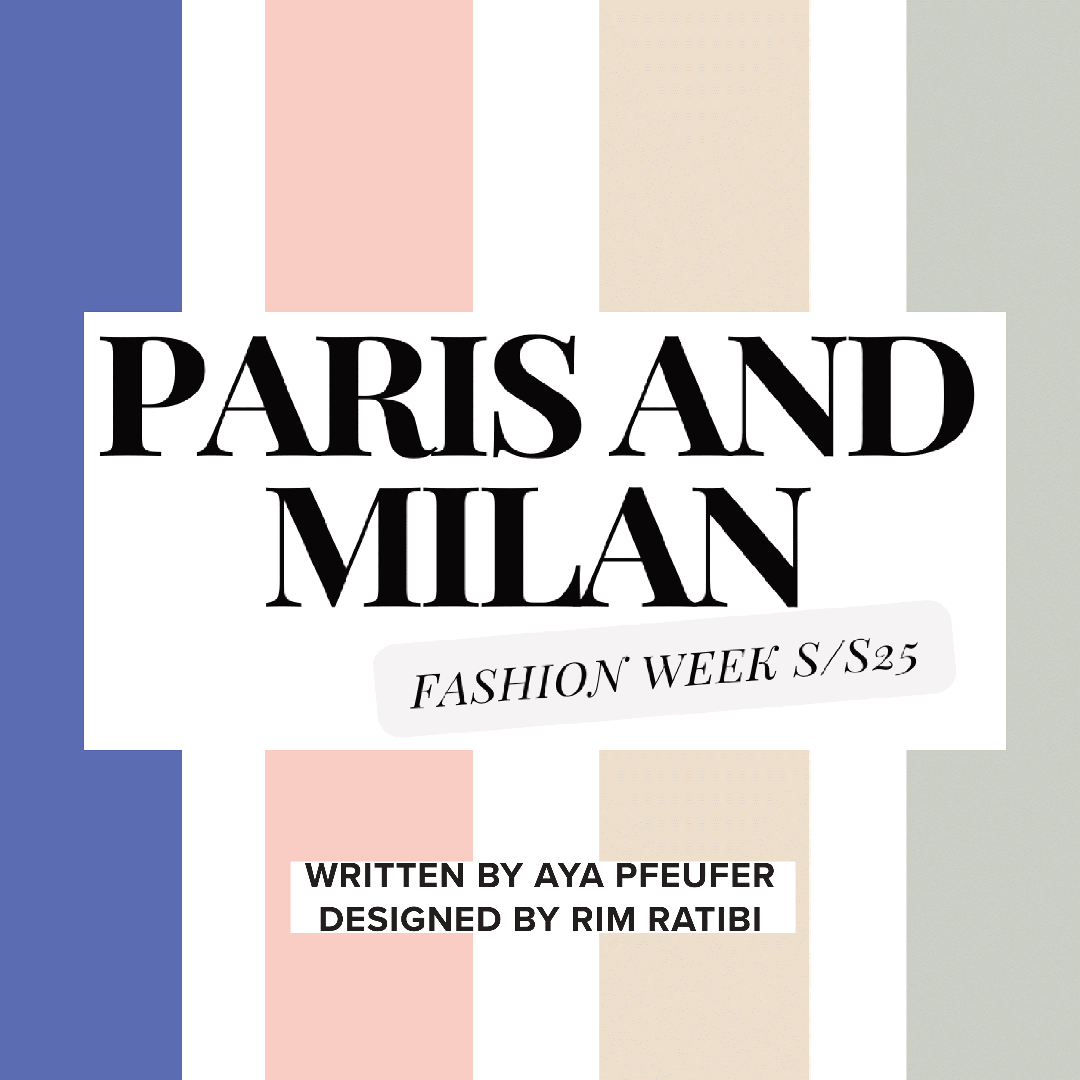
The spring/summer 2025 season introduced new fashion trends and futuristic lines by creatives and fashion visionaries. Paris and Milan Fashion Week are semi-annual events that are part of the “Big Four,” which also includes London and New York. This year was primarily focused on sustainable practices, with designers using eco-friendly materials; another focus was accessories, from oversized hats to bold jewelry. This year’s fashion collection has been, to say the least, innovative.
Milan Fashion Week was packed with A-list celebrities, including Kendall Jenner and the Hadid sisters, and many of the fashion labels went off-script, presenting the unexpected. Prada showcased wired collars, wires sewn inside a shirtdress and clothes that looked like they just came out of the washing machine. On the other hand, brands such as Dolce & Gabbana focused their collections more on traditional craftsmanship and its Italian roots, specifically Sicilian heritage. The runways featured lacework and a range of colors from blues to oranges, reminiscent of Italian summers. Dolce & Gabbana’s style also emphasized liberated femininity by using blonde hair on the models. This particular type of aesthetic originates from the Golden Age of Hollywood, which is a Western beauty ideal. The collection had a combination of full-length skirts and blazers.
Fendi celebrated Milan Fashion Week through a 1920s-inspired show. Many silhouettes were showcased: A-line dresses in bold prints and asymmetrical and cut-out styles. Creative Artistic Director of Fendi, Kim Jones, celebrated 100 years of the brand through its collection — her focus was movement, lightness, excellence and ease. The collection highlights timeless elegance with a touch of modernism in design and the dresses, which were made of shimmering fabrics. The classic wear also blended digital prints and fluid movements creating a more modern effect. Venturini Fendi’s vision encapsulated the brand’s commitment to evolving while honoring its legacy.
After Milan Fashion Week was Paris Fashion Week, which also marked the end of the SS25 season. The show opened with Dior; its collection drew inspiration from nature and a transcendent sense of spring. Maria Grazia Chiuri, the creative director at Dior, showed floral designs, butterfly embroidery and contemporary femininity.
Chanel’s collection included the classic little black dress and numerous pastel-colored pieces that embodied elegance. Unlike other household brands, Chanel does not currently have a creative direction, but regardless, this did not prevent it from leaving a mark on the show. The designers were inspired by the lightness and flight, resulting in clothing that reflected the ease of movement. The collection was made from light fabrics and flowing clothes were displayed. Flight suits and garments with features such as dresses also added a layer of the themes of lightness and flight.
Rick Owens, an American fashion designer who pushes the boundaries of fashion and is known for his unconventional and unique approach to fashion, showcased his work at the Palais de Tokyo. His show, named “Hollywood,” stood out as the runway models were students and staff from top fashion schools across Paris, creating an inclusive and engaging environment. Rick Owens highlighted large platform boots and the palette consisted of both darker and lighter shades; his collection featured gothic-style clothing and jewelry.
Retro style was reintroduced during Paris Fashion Week such as bloomers and high-rise flared jeans. This trend was showcased by guests who dressed in retro clothes at the fashion show as well as the models on the catwalk, especially in the Chemena Kamali’s Chloé catwalk. It’s a change from the classic skinny jeans that dominated the fashion industry in the previous decade, showing a shift toward a more nostalgic style, prioritizing comfort.
Both Milan and Paris Fashion Weeks SS25 stressed the importance of the global fashion collective in shaping the future of the fashion industry. Much emphasis was put on sustainability and innovation. Many designers also incorporated virtual reality, creating a more futuristic perspective for viewers. But what remains consistent is the balance of tradition and new fashion ideas.